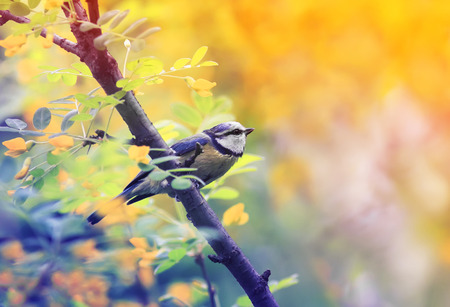Introduction to British Seasonal Wildlife
There’s something truly magical about setting out on a countryside walk or a ramble through a local park, especially when you’re in good company. Across the UK, each season brings its own cast of wildlife stars, from vibrant birds and curious mammals to delicate wildflowers bursting into bloom. For families, these moments offer not just fresh air and exercise, but a chance to bond and marvel at nature’s ever-changing wonders together. Whether you’re listening for the first call of the cuckoo in spring, spotting deer in a misty autumn woodland, or admiring bluebells carpeting the forest floor, wildlife spotting is an adventure all ages can enjoy. Alongside the excitement of discovery comes an important lesson: respecting the habitats we visit ensures that these experiences remain for future generations. As the seasons turn, let’s explore how to make the most of Britain’s rich natural heritage—while treading lightly and leaving only footprints behind.
Birdwatching on British Trails
One of the simplest joys for families exploring the UK’s scenic trails is spotting birds throughout the changing seasons. From the cheerful robin hopping along frosty winter paths to the energetic swifts darting overhead during the warmth of summer, birdwatching introduces children to the wonders of nature right on their doorstep. Not only does this activity encourage patience and observation skills, but it also creates lasting memories as you tick off new feathered friends together.
Common and Rare Birds to Watch For
Here’s a handy guide to help your family know what birds to look out for as you ramble through woodlands, meadows, and riverbanks across Britain:
| Season | Common Birds | Rare/Notable Sightings |
|---|---|---|
| Winter | Robin, Blue Tit, Blackbird | Brambling, Waxwing |
| Spring | Chaffinch, Great Tit, Song Thrush | Nightingale, Cuckoo |
| Summer | Swift, Swallow, House Martin | Hobby, Redstart |
| Autumn | Goldfinch, Wren, Starling (murmurations) | Ring Ouzel, Fieldfare |
Tips for Family Birdwatching Adventures
- Pack Binoculars: Children love getting a closer look! Choose lightweight binoculars made for little hands to make spotting easier and more engaging.
- Create a Birdwatching Journal: Bring along a notebook or download a simple bird-spotting app. Encourage kids to sketch or jot down each new species they see — you can even add stickers for extra fun!
- Be Quiet and Patient: Teach children that birds are easily startled by noise or sudden movement. Make it a game to see who can be the quietest watcher.
- Use Guidebooks: A pocket-sized British bird guide can help everyone quickly identify what they spot. Some trails even have information boards with local highlights.
- Visit Different Habitats: Try woodland walks, riverside rambles, or coastal paths — each offers unique birdlife depending on the time of year.
A Family-Friendly Tradition
Together, birdwatching turns every family walk into an adventure filled with discovery. Whether it’s recording your first robin sighting of the year or catching a glimpse of a rare migratory visitor, these shared experiences foster curiosity about British wildlife in children and adults alike. So next time you head outdoors, don’t forget your binoculars — you never know which feathered friend might join your journey!

3. Spotting Woodland Beasts and Bugs
Woodland walks offer a wonderful chance for families to spot some of Britain’s most enchanting mammals and insects in their natural habitats. As you wander beneath ancient oaks or along bluebell-carpeted paths, keep your eyes peeled for elusive deer grazing quietly between the trees, cheeky squirrels scampering up trunks, or even a shy hedgehog snuffling through the undergrowth at dusk.
For little explorers, discovering woodland bugs can be just as thrilling. Look out for bright butterflies fluttering from flower to flower—species like the Red Admiral or Peacock are common sights in spring and summer. Ladybirds, beetles, and woodlice also make fascinating finds under fallen logs or among leaf litter. Bring a magnifying glass to help children take a closer look without disturbing these tiny creatures.
When wildlife spotting, remember that patience is key. Encourage everyone to walk softly and speak in hushed tones so as not to startle animals. If you’re lucky enough to encounter woodland mammals, admire them from a respectful distance; this helps protect both the animals and your family. Remind children not to chase after wildlife or try to touch any creatures they find.
Some British woodlands have handy information boards about local species, which can add an educational twist to your adventure. Why not bring along a simple wildlife checklist or nature journal? Ticking off each sighting together is a lovely way to make memories while learning about the wonders of our native countryside.
4. Blossoms and Wildflowers: A Changing Tapestry
One of the real joys of exploring family trails in the UK is witnessing the ever-changing tapestry of wildflowers and blossoms as the seasons unfold. From the delicate snowdrops of late winter to the vibrant carpets of bluebells in spring, and from summer’s cheerful wild poppies to autumn’s golden hues, each walk offers something new for families to discover together.
The Colourful Calendar of Blooms
Wildflowers and blossom trees add bursts of colour to woodlands, meadows, and hedgerows throughout the year. Early spring sees drifts of daffodils and the iconic bluebell woods, while apple and cherry blossoms create a magical canopy overhead. As summer arrives, look out for foxgloves, buttercups, and red campion, followed by blackberries and rosehips come autumn.
| Season | Common Flowers & Blossoms | Where to Spot Them |
|---|---|---|
| Late Winter | Snowdrops, Crocuses | Woodland edges, churchyards |
| Spring | Daffodils, Bluebells, Cherry & Apple Blossom | Parks, ancient woods, orchards |
| Summer | Poppies, Foxgloves, Buttercups | Meadows, field margins |
| Autumn | Rosehips, Brambles, Heather | Hedgerows, moorlands |
Simple Flower Identification Fun for Families
You don’t need to be an expert botanist to enjoy identifying flowers with your children. Bring along a pocket guide or download a British wildflower app before you set off. Encourage little ones to look for shapes (like bell-shaped bluebells or starry daisies), colours, or leaf patterns. Turn it into a friendly game – who can spot the first buttercup or find a tree heavy with blossom?
Family Nature Crafts Ideas
- Pressed Flower Bookmarks: Collect fallen petals or leaves and press them between heavy books at home. Use them to make colourful bookmarks as a memento of your walk.
- Blossom Crowns: Use soft twigs and freshly fallen blossom petals (never pick from living trees) to weave simple nature crowns for imaginative woodland play.
- Wildflower Collages: Gather petals and leaves that have naturally dropped on the ground to create collages or greeting cards together.
A Gentle Reminder:
Always encourage children to admire flowers without picking them wherever possible – this helps protect habitats for everyone (and every creature) to enjoy. With each family adventure, you’ll not only witness Britain’s beautiful blooms but also nurture your children’s curiosity about the natural world.
5. Best Family-Friendly Seasonal Trails Across the UK
Planning a day out in nature with the family can be a real treat, especially when you know where to find the best spots for wildlife and seasonal wonders. The UK is dotted with scenic rambling routes and nature reserves that offer a perfect blend of adventure, learning, and relaxation for all ages. Here are some top recommendations to help you spot birds, beasts, and blossoms together.
Bluebell Woods of Kent
If you’re after a magical springtime stroll, head to the bluebell woods in Kent, such as Hucking Estate or Emmetts Garden. The carpets of bluebells provide a stunning backdrop for wildlife spotting—look out for songbirds flitting among the trees, and if you’re lucky, you might even spot a shy deer. Paths are generally well-maintained and suitable for pushchairs, making them ideal for families with younger children.
Wild Moors of Yorkshire
The Yorkshire Moors come alive with heather and wildflowers in late summer, creating a purple-hued paradise. Brimham Rocks and Ilkley Moor are both excellent choices, offering dramatic landscapes and plenty of open space for youngsters to explore. Keep an eye out for curlews, kestrels, and hardy sheep grazing on the hillsides. Remember to pack waterproofs—the weather can change quickly up north!
Woodland Walks in the New Forest
For a year-round adventure, try the New Forest in Hampshire. Its ancient woodlands are home to free-roaming ponies, red deer, and countless bird species. The Bolderwood Deer Sanctuary trail is particularly family-friendly with gentle paths and picnic areas. Bring binoculars to spot wildlife from the viewing platform.
Practical Tips for Planning Your Family Day Out
- Check trail accessibility: Some paths may be uneven or muddy—choose routes suitable for your children’s ages and abilities.
- Pack essentials: Bring snacks, water bottles, spare clothes, sun cream or raincoats depending on the season.
- Engage young explorers: Turn your walk into a mini treasure hunt or bring a simple wildlife checklist to keep little ones excited about what they might spot.
- Respect nature: Remind children not to pick wildflowers or disturb animals—teach them to be gentle observers.
A Little Extra Local Flavour
Many trails have nearby tearooms or country pubs—perfect for warming up with a hot chocolate after your ramble! Check opening times in advance, especially outside peak seasons. With so many beautiful places across Britain to discover together, each outing offers new opportunities to connect as a family while enjoying the changing wonders of nature.
6. Tips for Making the Most of Your Wildlife Adventure
To ensure your seasonal wildlife spotting trip is memorable and enjoyable for the whole family, a little preparation goes a long way. Here are some practical tips tailored for families exploring Britain’s great outdoors.
Pack Picnic Essentials
No British family walk is complete without a hearty picnic. Pack sandwiches, fruit, and a thermos of tea or hot chocolate to keep everyone energised. Don’t forget reusable water bottles and a blanket for sitting comfortably amidst nature. Remember to take your rubbish home—leaving no trace ensures these beautiful spots stay pristine for both wildlife and future visitors.
Dress for Unpredictable Weather
The British weather is famously fickle, so layering is key. Lightweight waterproof jackets, wellies, and spare socks are must-haves, especially if little ones can’t resist puddle jumping! A sun hat and sunscreen are wise in summer months, while gloves and woolly hats will keep everyone cosy during chilly spring or autumn mornings.
Bring Along Spotting Tools
A pair of binoculars and a simple field guide can turn an ordinary walk into a mini adventure. Children love ticking off birds, mammals, and wildflowers they spot along the way. Encourage them to make sketches or keep a small nature diary—it’s fun and educational!
Teach Responsible Wildlife Etiquette
Wildlife watching is magical but should always be respectful. Teach children to keep voices low near animals, stick to marked paths to avoid trampling habitats, and never feed wild creatures as human food can harm them. Observing from a distance helps ensure wildlife stays safe and undisturbed.
Encourage Curiosity—but Leave Nature Untouched
It’s natural for children to want to collect feathers or pick wildflowers, but remind them that nature is best left as it is so others (and the animals!) can enjoy it too. Taking photos instead is a wonderful way to capture memories without harming the environment.
Plan Ahead for Family-Friendly Routes
Before setting out, choose trails that are suitable for all ages and abilities—many UK reserves and country parks offer pushchair-friendly paths and facilities like loos or cafés. Checking ahead means fewer surprises and more time enjoying Britain’s birds, beasts, and blossoms together.


